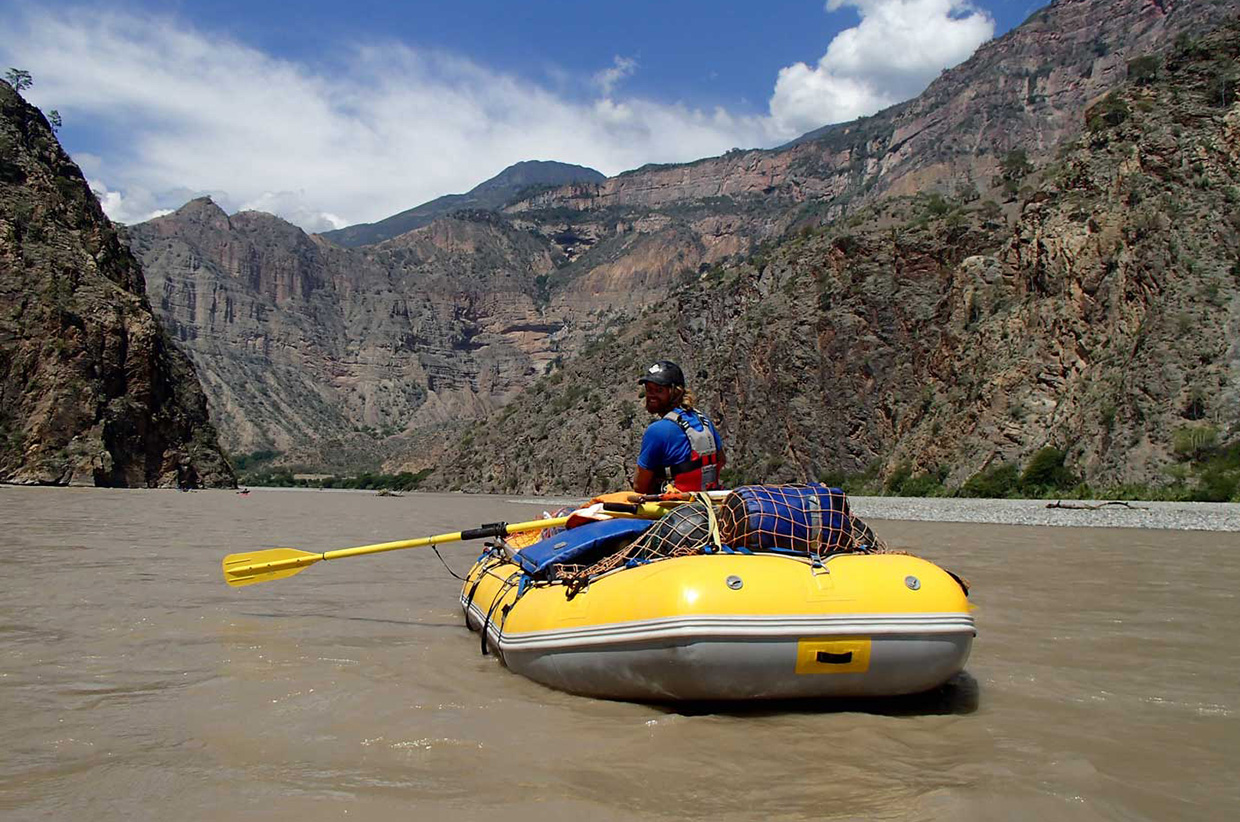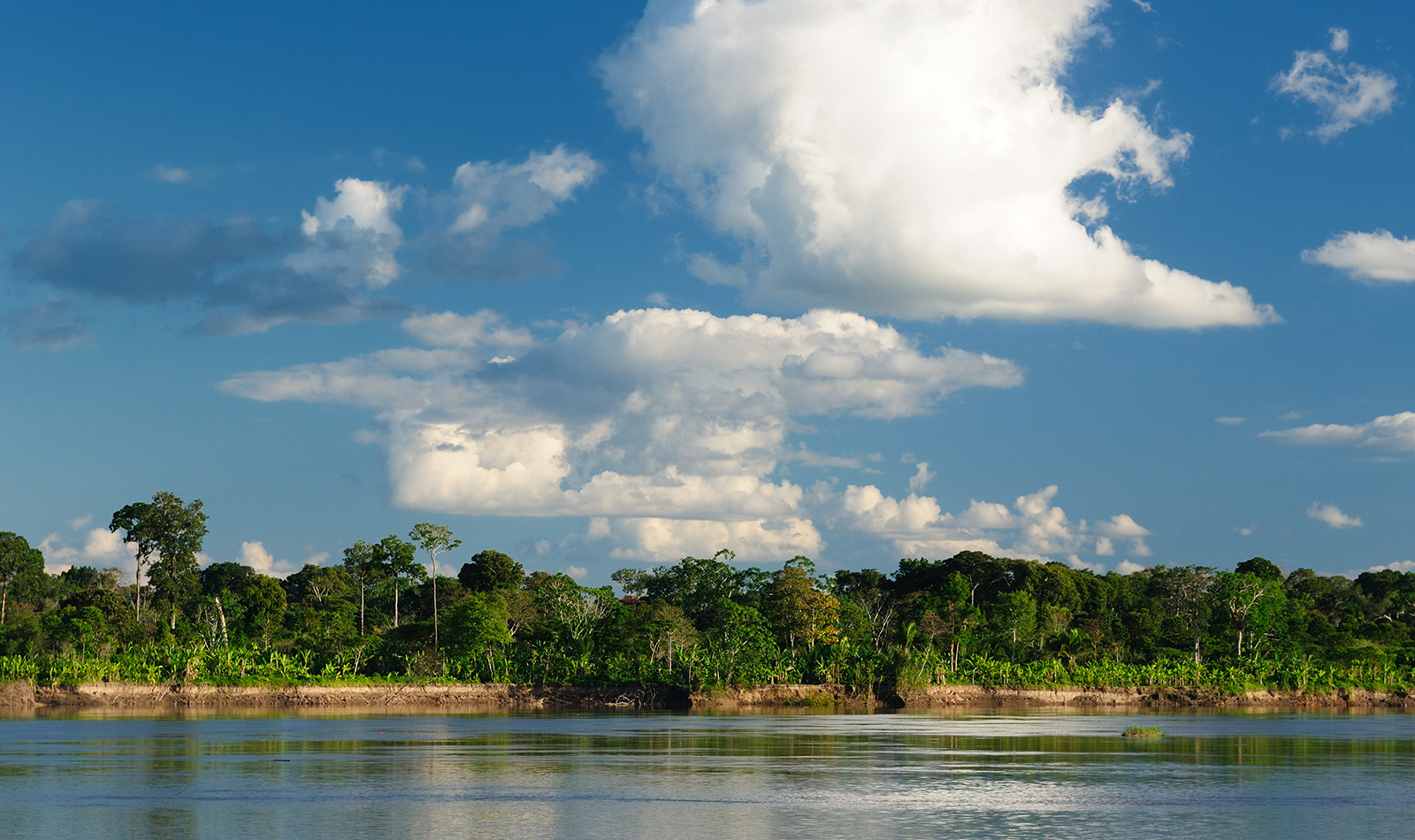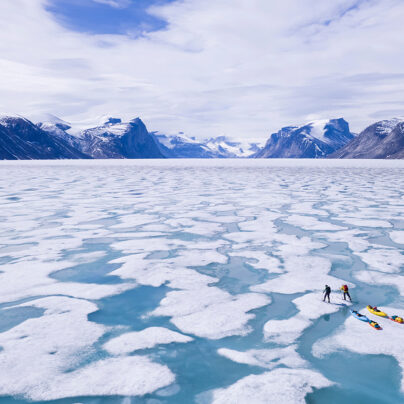Journey Down the Río Marañón
Written by Ruth Tauber
Photography by Emil Carlsson and Rocky Contos
The Río Marañón is the hydrological source of the Amazon, contributing the largest volume of water to the main river. The expedition in January and February was a pioneering attempt to raft the Río Marañón at high water levels. The Peruvian rainy season was feeding the ferocious river, transforming some rapids into huge features, and washing others right out.
At its upper section, the Río Marañón passes through a section not unlike the Grand Canyon in the United States. This and the many villages alongside the river are just some of what will be destroyed if the planned construction of twenty dams along the river goes ahead. Rocky Contos’s organisation, Sierra Rios, together with International Rivers, are campaigning to prevent these dams interrupting the flow of this ‘serpent of gold’ as the Marañón is named in Ciro Alegría’s best-selling book La Serpiente de Oro, after the gold that can be found alongside the river.
Carlsson’s group had passed through the Grand Canyon section with a few flipped rafts, and all the thrill of the huge white-water that had carved the canyon. They were now in the jungle, getting to grips with the complex navigation of the ‘pongos’ – jungle rapids with their own unique character.
As the thirty-day trip entered the final phase, the group had become tired. Fierce rapids, stomach bugs and the crippling heat of the jungle were beginning to take their toll. Nervousness was growing too; everyone knew that the trip reached its end in the territory of the Awajún.
The Awajún, also known as Aguaruna, are a skilful warrior tribe never successfully subjugated by the Incas or the Spanish Conquistadors. More recently the tribe have faced threats from oil pipelines and bioprospectors. On the banks of the Río Marañón in 1995, two American river runners were shot; while Patchen Miller died, Josh Silver escaped by jumping into the river. This crime was never solved, but it is thought that drunken Awajún men carried out the attack.
Among Awajún villages rumours that white men come to steal young girls to sell into prostitution, and of organ harvesting, are rife. A few years previously Contos was camping by the river when a man approached him, put a gun to his head and asked where the children were. Fear and revenge for lost children is a dangerous cocktail.
The Río Marañón is the hydrological source of the Amazon, contributing the largest volume of water to the main river. The expedition in January and February was a pioneering attempt to raft the Río Marañón at high water levels. The Peruvian rainy season was feeding the ferocious river, transforming some rapids into huge features, and washing others right out.

The crowd laughed, any tension fell away, and in the same moment a woman came up behind Slovenian kayaker Dusan Komel and smeared his face with a red paste. Soon an easy camaraderie was flowing, and each river runner in turn had his or her face smeared with the red paste, made from the seeds of the achiote tree.
At Nahém, the first Awajún village the January expedition reached, the group was greeted cheerfully. The river-runners offloaded their colourful gear on the beach – the villagers watched carefully as camp was laid out, eyeing devices such as the hand-wash system with curious amusement.
In the morning the group went into the village to give gifts to the children, including a brand new football, and to discuss the dams with the chief or apu, Eusebio. The villagers challenged the group to a game of football. Female kayaker and adroit footballer, Carson Lyness, went down a treat with villagers, but not well enough for the village to allow defeat. They thrashed their visitors.
Things were going very well, but all too soon it was time to get back on the river. There was another thirty kilometres of river to raft that day. Eusebio and his grandson were to join the trip for the final leg of the journey, deeper into the jungle. It was hoped that his presence might calm any tensions that might arise with other Awajún villages.
The group of rafts and kayaks soon approached a second village, Yupicusa. The single phone number linking the village to the outside world had gone unanswered, despite Contos’s many calls.
The group trudged through the sticky mud to the village centre where Contos explained they were visiting as tourists. He went on to make clear they were opposed to the dams and that someday, a tourist trade could be established that could prove lucrative for the villagers, but that this would take time. The villagers looked on warily. Luciano Troyes, a Peruvian conservationist, began an impassioned speech that culminated with him explaining ‘some of you might like to play football in your spare time; well what Rocky and his friends like to do in their spare time is float down the river like ducks.’
The crowd laughed, any tension fell away, and in the same moment a woman came up behind Slovenian kayaker Dusan Komel and smeared his face with a red paste. Soon an easy camaraderie was flowing, and each river-runner in turn had his or her face smeared with the red paste, made from the seeds of the achiote tree.
These deliberations had taken time, and darkness was approaching. The group needed to be getting back on the river. They said their goodbyes and set off to find the intended camp, five kilometres downriver.
Dusk was falling, the cackle of birds in the jungle escalated to their final screeches before roosting for the night. Fat white clouds swelled up from the surrounding hills, pale against the darkening sky.


More people joined the chase: children, women and young men, in the jungle uniform of football shirts and shorts, jumped and ran along the path. Contos paddled to the water’s edge and from his kayak, explained that they were tourists, and meant no harm. They could not stop as they needed to reach camp before dark.
A couple of young men listened briefly, before reaching for rocks. They launched them at Contos, narrowly missing his kayak. He retreated to the middle of the river. The light level fell still more and the shouts grew louder and more aggressive. By now there was another crowd jostling on the other side of the river, also shouting threats. The biggest insult of all, not stopping to explain oneself, was being served on two separate Awajún villages.
The river carried the rafts and kayaks at a speed nimbly matched by the Awajún, who knew these riverside tracks well. Eusebio became nervous in his raft, and Carlsson’s two Peruvian passengers, Brenilda and her son, Anderson, muttered to one another, they too were afraid.
‘Traer las armas!’ they heard from the side of the river, get the guns! Suddenly being in the middle of a flat expanse of water seemed like a very vulnerable place to be.
Suddenly, Carlsson could see people getting into lanzas, traditional Amazonian canoes. The long boats protruded from each bank, cutting up the clear path the group was hoping to take down the river. In one canoe, a young man steered from the rear, navigating the canoe to the middle of the group of rafters. In the bow sat a toddler, and in the middle a young woman, dressed in a bright orange top. Her eyes were focussed on the water, in some sort of trance; she chanted a low, incomprehensible speech.
In the morning Carlsson awoke to the sound of voices. A group of curious young Awajún were near the camp. After a conversation with Contos, they were invited into camp to share coffee and fresh fruit with the river runners emerging sleepily from their tents.
With time, and perhaps more coffee and fresh fruit, it may be that one day a small tourism arrangement, that is detrimental neither to the tribe, the tourist nor the jungle, can be established beside the Río Marañón.
Emil Carlsson is an adventurer and filmmaker who has rafted rivers in Iceland, Nepal, Uganda, Peru, Morocco, Norway, Sweden, Scotland, USA and Costa Rica. As well as rafting, Emil works as a fire trainer and firefigher.
www.twitter.com/rutaub
www.ruthtauber.co.uk
www.sierrarios.org




